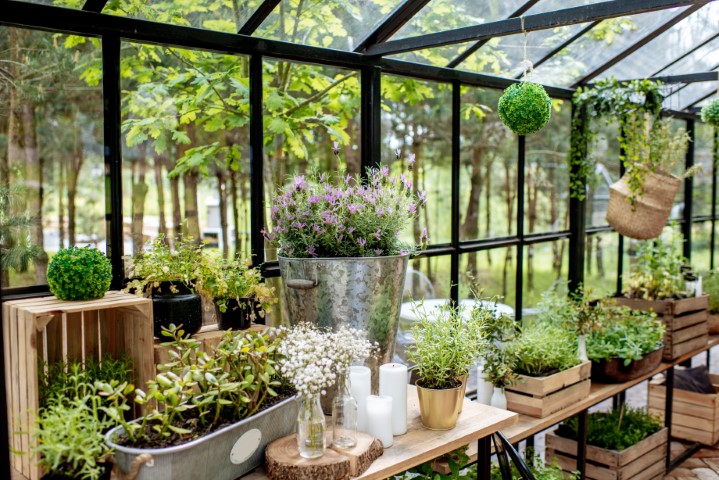Greenhouses provide an all-weather environment for plants and flowers in homes. This is the reason why homeowners always grab any opportunity to own a greenhouse. Whether the greenhouses are made of plastic, glass, or polycarbonate, it’s important to have it regularly maintained and cleaned.
The conditions for the controlled environment, like warmth, moisture, reduced weeds, and hygiene practices can deteriorate the greenhouse. Normal outdoor gardens are maintained using basic gardening practices, such as weeding, watering, and leveling of beds, which a greenhouse could also benefit from.
The greenhouse is made of materials, like glass and plastics, that attract dirt. During summer and windy conditions, the greenhouse can attract a lot of dust, sandy particles, and dry leaves. Such foreign objects obscure the sunlight from reaching the plants.
The roof, frames, side coverings, and other surfaces should be cleaned thoroughly using warm soapy water. While cleaning the interiors, it’s advisable to remove all the plants. Doing so gives you the opportunity to inspect the plants.
The floor should also be cleaned to remove any soil particles, dry weeds, and other stains from the greenhouse. Frames are favorite areas that pests can hide, which you can clean by using disinfectants, killing eggs, larva, or live pests.
By cleaning both outdoor and indoor materials, you’ll increase sunlight rays, improve the aesthetic value, reduce conditions for pests, and elongating the greenhouse’s life.
Remember to turn off any electrical appliances and connections when cleaning with water. This is a safety precaution for electric shocks and electrocution.
Greenhouse operates optimally when all its systems have zero or minimal defects. These include lighting, aeration, the external ecosystem, and the heating system
Below is a demonstration of how to take care of them:
It would be best if you also disinfected the holding water tank or reservoir used for irrigation.
To reduce the effects of heat during summer, you can also install roll-up shades inside the greenhouse. To improve the shade effect, there are many designs available in online shops, like UrbanOrganicYield.
Plants like flowers, shrubs, herbs, and vegetables make up the bulk of the area within the greenhouse. The maintenance of these plants improves the overall look of your greenhouse.
These are the plant husbandry routine you should undertake:
Use disinfecting secateurs to eliminate any pathogens that may be harboring or holding. Dead leaves should also be pruned and removed from the greenhouse since it can harbor pests and disease if they remain unattended.
Introducing ladybugs and spiders can prevent and curb the spread of whiteflies and spider mites. Fungus gnats can be eliminated by ensuring minimal dead plants are lying around.
Soils can harbor pathogens, like root aphids, fungus gnats, Pythium, Rhizoctonia, and others. It’s, therefore, advisable to keep changing soils and disinfecting any tools that come into contact with other gardens.
The pots, seed trays, and other planting containers should be emptied at least after two planting seasons. They should be thoroughly cleaned, disinfected, and left to dry in the sun. This exercise can be done late in winter, in preparation for planting season in spring.
The soil should be replaced with clean, disease-free soil that’s purchased from reputable vendors. This exercise should be conducted in all holding areas like pots, beds, and any soil along the paths.
Be sure to remove any debris and dead plants from the soil during the cleaning exercise. If you suspect that pathogens have contaminated parts of the soil, apply disinfectants to kill them.
When the weather is favorable, you should find time to remove all plants and equipment within the structure. This is vital in noting any structural defects, cracks, hiding pests, or any other foreign animals, like rodents.
Take time during this exercise to disinfect the frames. Insects such as thrips, spider mites, and aphids like hiding in the cracks found in the frames.

Beautiful herbs and flowers in the greenhouse
Conclusion
Regular maintenance of the greenhouse ensures that the conditions for plant growth are optimal. Important measures like a thorough cleaning, soil hygiene, weeding, pruning, and pest and disease control can be adopted.
To enhance the performance of your greenhouse, check regularly important systems, such as ventilation, aeration, shading, and the watering. The above maintenance plays a big role in elongating your greenhouse’s life and reduce the need to replace it entirely.